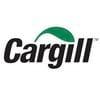Aflatoxin Binders
Original in vivo model to test efficacy of aflatoxin B1 binders
Several approaches have been investigated to reduce exposure of animals to aflatoxins in contaminated feeds. The addition of sequestering or binding agents to aflatoxincontaminated feedstuffs is one of the most used worldwide.
As stated by SCHEIDELER (1993), the effectiveness of a potential sequestering agent should be measured in vivo following in vitro evaluation. In fact, in vitro studies aiming at checking the binding capacity of mycotoxins are very useful for a first screening of potential candidates, provided they are made taking the digestive tract environment into account (pH variation for example). However it is difficult to assume that a product with good efficacy in vitro will for sure perform when fed to intoxicated animals.
The objective of the study is to develop the more ethic, rapid, not costly and reproducible in vivo method allowing to efficiently screen potential toxin binders.
MATERIAL AND METHODS :
In a preliminary study, a basal diet (standard duckling feed formula in mash form) was manufactured from aflatoxin-free raw materials. This basal diet remained as a negative control diet. Pure synthetic aflatoxin B1 (Sigma Chemical Co., St.Louis, MO, USA ) was added to basal diet to manufacture the different contaminated diets, to achieve theoretical contamination levels of 50, 125, 250 and 500 ppb.
240 day-old male Pekin ducklings were housed in 10 wired cages (2 replicates of 24 birds for each diet) and fed from day 1 to day 21.
Ducks were observed twice a day and the mortality was recorded. Birds were individually weighed at days 7, 14 and 21. Feed intake per cage were also recorded. At day 21, all the animals were slaughtered. Blood parameters were analysed (cholesterol, protein plasmatic rate, albumin) as intoxication biomarkers (RAUBER & al, 2007) as they change very rapidly due to the reduction of the liver function, particularly inhibition of synthesis of protein and impairment of lipidic metabolism by the aflatoxins.
The slaughtered animals were dissected. Hearts and livers were individually collected and weighed. Weights were expressed as a percentage of body weight, thus obtaining the relative weight of organs.
The protocol of preliminary experiment was replicated in a second experiment to confirm the preliminary observation, and to evaluate the ability of the model to evaluate protective effect of toxin binders.
Aflatoxin B1 diet content was analyzed (Lareal, France) and revealed respectively 26, 92, 183 and 367 ppb of aflatoxin B1.
A significant (p<0,05) decrease in body weights and feed intake was observed at all age at 367ppb of aflatoxin (highest dose). Relative weights increased significantly (p<0,001) for the heart at d14 and d21 at 92ppb, the spleen at d7, d14 and d21 at the highest dose, the proventriculus at d14 and d21 at he highest dose and the gizzard at d21 at the highest dose. Liver relative weight was not significantly affected. At day 21, total plasmatic protein and albumin were significantly lowered for every aflatoxin concentration. Total plasmatic cholesterol was significantly lowered from level of 92 ppb (graph 1).
Graph 1 : evolution of blood parameters according to the level of Aflatoxin B1
10 days exposure was also long enough to observe aflatoxin effect. As a consequence, it was decided to reduce trial duration from 21 to 10 days for the next experiments.
The incorporation of 100 ppb of aflatoxin B1 causes significant modifications in the biochemical plasmatic profile ( Table 1 ), which were counteracted by the addition of 5 or 7.5 mg of reference toxin-binder (based on clay , named P1) per g of contaminated diet.
Table 1 : plasmatic parameters
Compilation of 15 studies 15 tests including up to 20 diets have been run on the model. More than 50 products have been tested (graph 2).

Table 2 : Plasmatic parameters

The "ducklings in vivo model" based on modification of physiologic parameters requires low levels of toxins (realistic doses), low numbers of animals and short time of exposure.
It is sensitive and reproducible and is a good compromise between ethical concern and experimental needs. It enables to rapidly and economically differentiate potent or inefficient aflatoxinbinders.
REFERENCES
- DEVEGOWDA G. , T.N.K.MURTHY . 2005 . Mycotoxins : their effects in poultry and some practical solutions . The mycotoxin Blue Book . Nottingham University Press 25-56 - JONES,F.T,W.M.HAGLER,and P.B.HAMILTON 1982 . Association of low levels of aflatoxins in feed with productivity losses in commercial broiler operations . Poult.Sci.61:861-868.
- MODIRSANEI M.,KHOSRAVI A.R.,KIAEI S.M.M.,BOZORGMEHRI FARD M.H, GHARAGOZLOO M.J. , KHAZRAENIA P; 2004 . Efficacy of dietary natural Zeolite and Saccharomyces cerevisiae in counteracting aflatoxicosis in broiler chicks . J;Appl.Anim.Res. 26 : 39-44. - RAUBER , R.H.,P.DILKIN,L.Z.GIACOMINI,C.A.A.de ALMEIDA ,C.A.MALLMANN 2007. Performance of turkey poults fed different doses of aflatoxins in the diet . Poult.Sci. 86 (8) : 1620-1624
- SCHEIDELER S.E. , Effects of various types of aluminosilicates and aflatoxin B1 on aflatoxin toxicity , chick performance , and mineral status . Poultry Sci. 1993 72/ 282-288.
The research done is most needed aspect of aflatoxin, as tropical climatic conditons are concern it seems that it is inevitable complete elimination of this toxic metabolite in food and feed. It is very much important to find a suitable binder to be used in particular animal feeding stuff.
K R Dayananda

Base on our study here in the philippines, the most effective binder for aflatoxin is the hydrated sodium calcium allumino silicate. We are not using clays as binders, because clays are lamellar structures when exposed to water it expands like a plywood creating big pores that can bind vitamins and minerals and sometimes even antibiotics. HSCAS is a crystalline, porous,that cannot be affected by water and heat, it maintains a porosity of not less than 3 and not more than 8 amstrong. The smallest molecular size of a vitamin is vitamin b2 (niacin) meassuring 8.45 amstrong. By means of chemical analysis of the sample product you can determine the porosit y of an HSCAS or CLAYS by dividing the ratio of silica to alumina, it should be not less than 3 and not more than 8 amstrong. The finer the mesh size the lower the inclussion rate because the finer the material the bigger the surface area for binding and cation exchange. For the 325 mesh of hscas, the inclussion rate of an HSCAS should be minimum of 10 kilos, maximum of 20 kilos per tonne depending on ppb level of toxin., while for the 400-450 mesh of HSCAS the inclussion rate is just 2.5 to 5 kilos / tonne of feeds. We maintain 4 kinds of analysis when it comes to HSCAS; CEC test- to know the capacity to bind.; chemical analysis - to know if it is binding vitamins and minerals or not ; sieve test - to know the right inclussion rate; and x-ray diffraction - to know the purity. The generic name of HSCAS is zeolite. Zeolite formed millions years ago by the erruption of volcano. it is the magma by the process of aging is like a diamond that creates a significant value in the human race.


Aflatoxin Testing Solutions

interesting article about test efficacy of aflatoxin B1 binders. Did you use HSCAS, 400 mesh at an inclusion rate of 3 - 5 kilos / tonne?











